The House That Dripped Blood-1971
Director Peter Duffell
Starring Christopher Lee, Peter Cushing
Scott’s Review #1,408
Reviewed October 31, 2023
Grade: B+
Any horror project including Christopher Lee and Peter Cushing is worth a watch and The House That Dripped Blood (1971) features both actors though sadly not in any scenes together.
The British horror anthology is spooky and perfect for the Halloween season. The action surrounds a hulking house where bad events occur regardless of who inhabits it.
The film is divided into four short stories explaining the circumstances surrounding the individual inhabitants.
The production is low budget which is perfect for a film like this but the title makes it seem bloodier and gorier than it is.
All of the stories were originally written, and subsequently scripted, by Robert Bloch.
Below is a summary, review, and rating of each vignette.
Framework: B+
Shortly after renting an old country house, a well-known film star Paul Henderson mysteriously disappears and Inspector Holloway (John Bennett) from Scotland Yard is called by a local Sergeant to investigate.
Inquiring at the local police station, he is told some of the house’s history.
He soon learns how four tenants met macabre fates.
The ‘Framework’ sequence goes between the vignettes and provides good context but is more or less just the interplay between Inspector and Sergeant.
This serves as an introduction to each chapter and ties the events together.
Method for Murder: A-
Charles Hillyer (Denholm Elliott) is a struggling writer who specializes in horror stories. He and his wife Alice (Joanna Dunham), move into the house thinking it will serve as inspiration. Charles creates a devious character named ‘Dominic’ after he ‘imagines’ seeing him outside a window.
Charles soon starts to see Dominic, who begins stalking and tormenting him.
My second favorite of the four chapters, I all but guessed the ‘twist’ from the get-go but was surprised at the ‘twist on top of a twist’ which pleased me.
It’s great when a villain thinks they’ve gotten away with murder only to be murdered themselves.
Waxworks: B+
Retired stockbroker Philip Grayson (Cushing) moves into the house with plans to read, garden, and relax. Though initially he occupies himself with his hobbies, he quickly becomes lonely. One day, while wandering around town, he happens upon a wax museum.
Grayson explores the museum and finds a sculpture of a dead woman he had been in love with. The museum’s proprietor explains that he based the likeness of the sculpture on his late wife, who had been executed after murdering his best friend.
Despite featuring Cushing, it’s a moderately good story but lacks the compelling nature of a couple of the other vignettes.
It’s less about the house itself and more about the wax museum and obsession is the subject matter.
While decent, Waxworks didn’t blow me away either.
Sweets to the Sweet: A
Widower John Reid (Lee) moves into the house next along with his odd young daughter Jane (Chloe Franks). John hires former teacher Ann Norton (Nyree Dawn Porter) to tutor Jane. Ann bonds with Jane, she helps Jane get over a fear of fire.
Ann suspects John of abusing Jane but is there more to the story? Why doesn’t he let Jane play with other children or toys and do his best to keep her isolated?
Is there something wrong with Jane?
This is the best installment and has a resemblance to The Innocents (1961) featuring a governess and a spooky child. Viewers will find themselves switching alliances with the characters as the story rapidly moves along.
The Cloak: B+
Finally, horror film actor Paul Henderson (Jon Pertwee) moves into the house while starring in a vampire film being shot nearby.
Irritated by the lack of maturity or talent from the cast and crew he decides to purchase a realistic cloak worn by his character (who happens to be a vampire). The shop he makes his purchase from is run by the enigmatic Theo von Hartmann (Geoffrey Bayldon) who eerily offers him a black cloak.
This one plays like a Hammer Horror Dracula installment and is good but not great. Less happens within the confines of the house than I’d like and Paul is an unlikable character.
The action on the movie set and in the shop are the best parts.
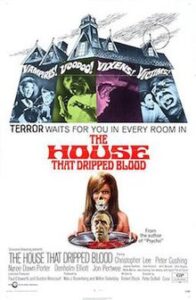
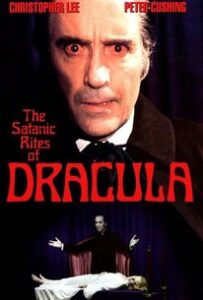
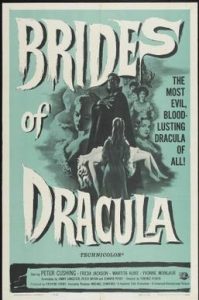
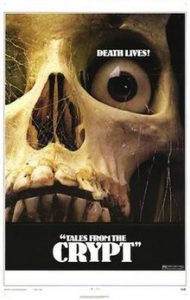
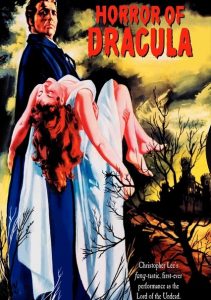
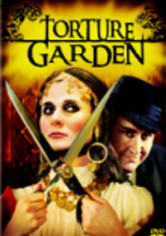
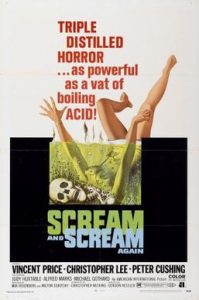
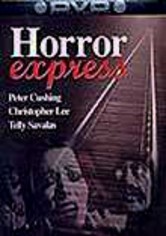
![220px-Madhouseposter[1]](http://scottsfilmreviews.com/wp-content/uploads/2015/04/220px-Madhouseposter1-196x300.jpg)